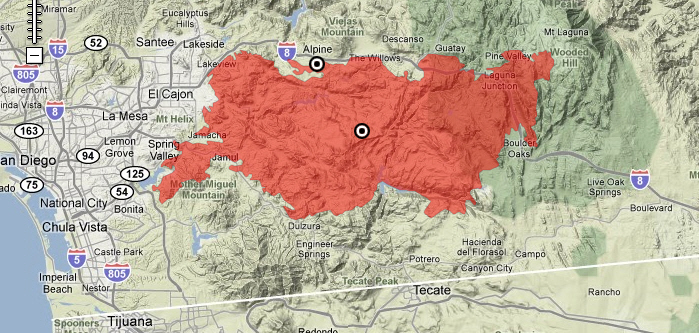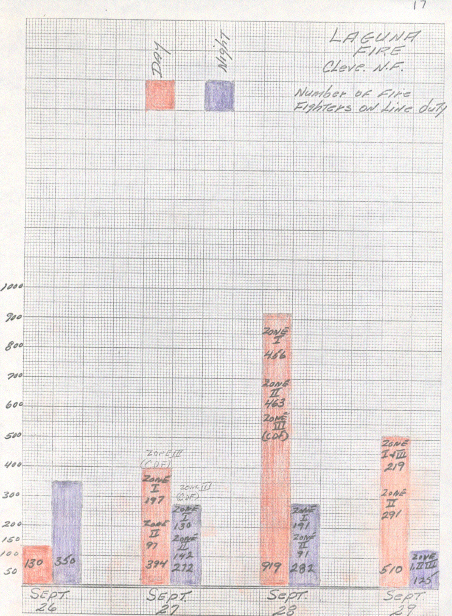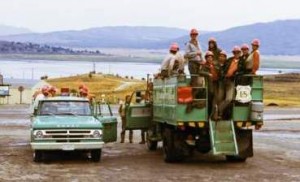
At 6:15 a.m. PT on September 26, 1970 the Laguna Fire started on Mt. Laguna east of San Diego near the intersection of Kitchen Creek Road and the Sunrise Highway. By the time it was stopped on Oct. 3 1970 it had burned 175,425 acres, killed eight civilians, and destroyed 382 homes. In the first 24 hours the fire burned 30 miles, from Mount Laguna, California into the outskirts of El Cajon and Spring Valley, devastating the communities of Harbison Canyon and Crest. Previously known as the Kitchen Creek Fire and the Boulder Oaks Fire, it was, at its time, the second largest fire in the history of California.
The Laguna fire started from downed power lines during a Santa Ana wind event. Santa Anas are warm, dry winds that characteristically appear in Southern California during autumn and early winter. They can be typically caused by a pressure differential between a high in the Great Basin and a low in the eastern sub-tropical Pacific.
Richard Raybould, Fire Control Officer on the Descanso District of the Cleveland National Forest, was the first Fire Boss on the fire. Shortly after it started he was told by the Cleveland National Forest dispatcher that due to other large fires burning in southern California at the time, there were no organized crews available. The 40 to 60 mph winds made the use of firefighting aircraft impossible.
By noon the day it started the fire was divided into three Zones, each with a Fire Boss. Zone Fire Bosses included at various times, Richard Raybould, Howard Evans, Lynn Biddison, and Baldwin (unknown first name). The Zones were overseen by a General Headquarters, or GHQ, headed by Myron Lee, the Forest Fire Control Officer for the Cleveland National Forest.
The Laguna Fire and the others that occurred in southern California in September of 1970 led to the development of the Incident Command System (ICS) which morphed into the National Incident Management System (NIMS).

The day the Laguna fire started I was a crewmember on the El Cariso Hot Shots, and we were mopping up a brush fire near Corona a couple of hours north of the Laguna Fire.. We heard the radio traffic that morning about the new fire and the reports that it was cranking. It was The Big One. And there we were, stuck doing the dreaded mopup on a fire that was pretty much out. For hours we kept poking around trying to find something hot to put out, as we kept hearing more about the fire on Laguna Mountain that was hauling ass. We wanted to be there.

Finally, late in the afternoon we were dispatched to it. By the time we got to Pine Valley it was after sunset, and for some reason, I, a first-year hot shot, was in the pickup with Ron Campbell, the Superintendent. The two open-top crew carriers were behind us. As we drove into Pine Valley the hills adjacent to the community to the south and east were alive with the orange flames of the fire. The one radio channel we had on the Cleveland National Forest was completely jam-packed with radio traffic. You could not get a word in edgewise. We knew that this was going to be one that we would remember.
We worked on the fire all that night and then pulled several more shifts before we were transferred to the Boulder 2 fire in Cuyamaca State Park, which was a rekindle from the Boulder fire.
The video below Countdown to Calamity, documents the fire siege in southern California that occurred in late September, 1970, including “the fire destined to dwarf all the others”, the Laguna Fire.



